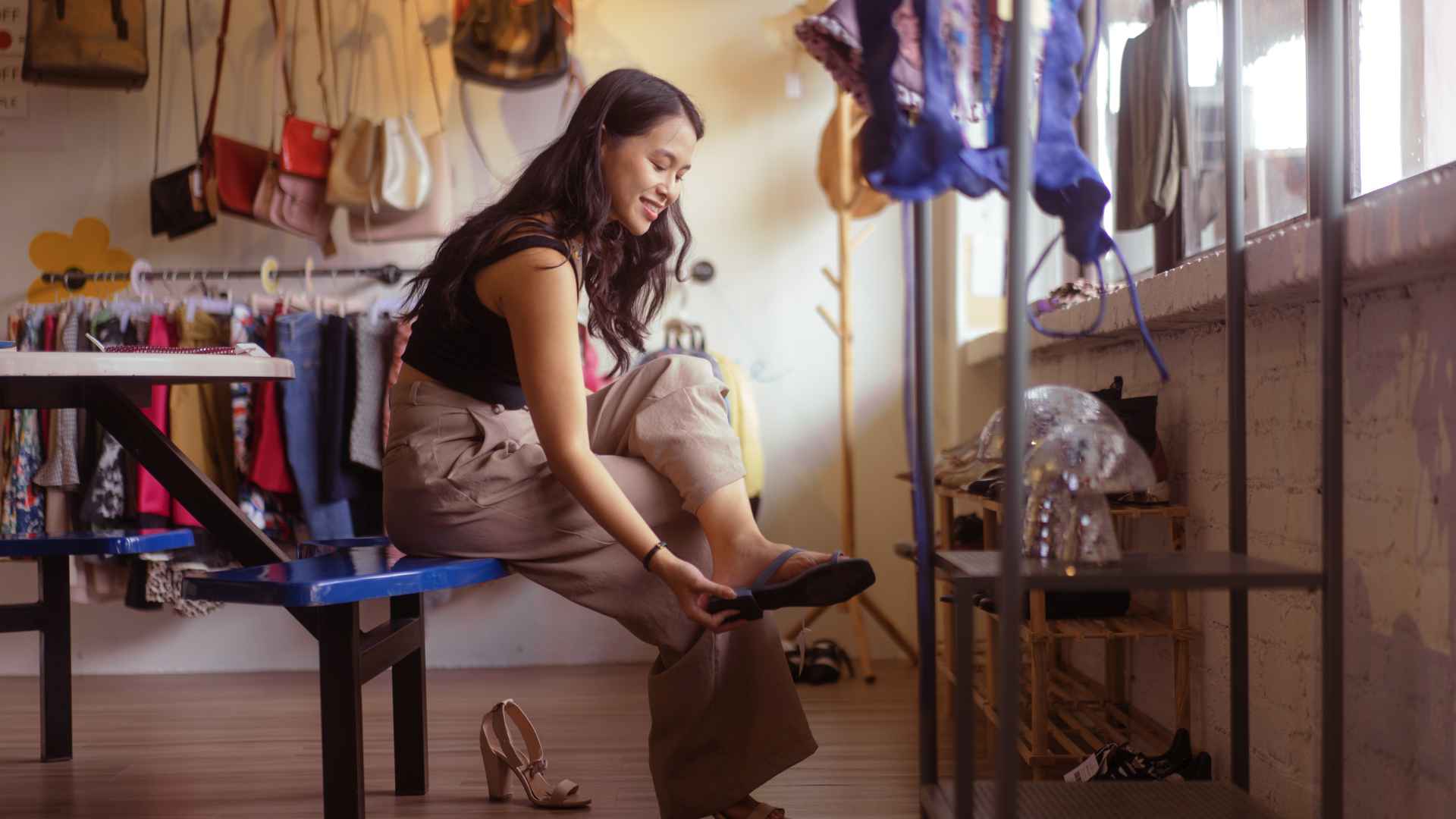Dedy Andrianto / Getty Images
Commitment to Our Readers
GOBankingRates’ editorial team is committed to bringing you unbiased reviews and information. We use data-driven methodologies to evaluate financial products and services – our reviews and ratings are not influenced by advertisers. You can read more about our editorial guidelines and our products and services review methodology.

20 Years
Helping You Live Richer


Trusted by
Millions of Readers
In recent years, the popularity of thrift shopping has steadily increased. In 2023, the thrifting market in the United States saw nearly $93 million in revenue, and approximately one-third of all clothing and apparel items bought that year were thrifted, according to Capital One Shopping.
While thrifting is also proven to save shoppers money — reportedly about $1,760 a year — and be a more affordable alternative to shopping retail, it is still important to know which days are the best and worst to shop at thrift stores.
Worst Days To Shop at Thrift Stores: Fridays, Saturdays and Sundays
If you are a lover of thrift shopping and usually save your thrifting sprees for the weekend, this is not the best decision for your finances. Nicholas Portello, a New York City-based fashion designer and content creator, said there are several reasons why these days are the worst for shopping at thrift stores, one being the big weekend crowds.
“It’s common sense that when consumers have off work, they have more free time to go shopping,” Portello said. “When you’re thrifting, you don’t want to be fighting with strangers to see a rack of clothing. Since you don’t know what you’re going to find, the most successful second-hand shoppers are patient and can sift through every item in a given section.”
Due to an increased number of shoppers, one may not have the luxury of taking their time to look at every piece of clothing on the racks, so you might miss out on the best deals. Additionally, since thrift stores know they will have more customers, they are less likely to offer the same sales on the weekends that they do throughout the week.
“Many thrift stores have colored tags on their items that indicate a certain percentage off of an item,” Portello said. “On weekends, these sales may not be offered or can be shifted so that you’re not saving up to your full potential.”
Best Days To Shop at Thrift Stores: Monday Through Thursday
Since the weekdays coincide with work and school hours, it is best to go thrifting during these days of the week. Since thrift stores expect fewer customers, they usually offer more sales and special deals during weekdays to entice more people to visit. Essentially, shopping at thrift stores from Monday through Thursday allows shoppers to take advantage of increased sales and smaller crowds.
“Consider an after-work thrifting trip to decompress after a long day in the classroom or office [or] spice up your day by taking a thrifting lunch break,” Portello said.
Additional Ways To Save at Thrift Stores
As important as it is to know which days are the best and worst to shop at thrift stores, it may also be beneficial to know other ways that shoppers can save money while thrifting, especially with thrift store prices having increased in recent years. One way to save money is to take the time to read the labels of clothing items in thrift stores and invest your money in high-quality pieces.
“Try to avoid buying clothes that are from fast-fashion brands like Primark and Shein, as that defeats the purpose of thrifting,” Portello said.
For avid thrifters, thrifting out of season can provide even more of a discount. Also, if you’re ever unsure about whether you’re getting a good deal on an item, cross-reference the price with listings on other second-hand online marketplaces, such as eBay or Depop (although Depop prices tend to be higher, according to Portello).
Another way to maximize your spending at thrift stores is to invest in wardrobe staples that you can wear many times with several different outfits.
“You can dress up a pair of thrifted vintage Levi’s jeans with a stylish button down and boots, or dress it down with sneakers and a soccer jersey,” Portello said. “Don’t be afraid to mix and match new pieces – you’ll never know what you may love.”
Lastly, if you are traveling, be sure to shop at local thrift stores for exclusive bargains and items you won’t be able to find at your usual vintage shops.
Financial Benefits of Thrift Shopping
Many thrifted items can be restyled or repurposed beyond their original design. As a fashion designer, Portello creates pieces using only secondhand materials, such as thrifted bed sheets.
“You never know what you’ll find at a second-hand store, whether it’s designer, something out of your comfort zone or something you never knew you needed,” Portello said. “I got so bored of the same big-name stores carrying the same pieces and wanted to spice up my wardrobe a bit.”
Ultimately, the financial benefits of thrifting can be found in the money you save per wear of an item.
“Thrifting also allows you to take more risks with your wardrobe without overpaying. Fashion is the ultimate form of self-expression and getting to try new pieces is exciting and fun,” Portello said.
Not only is thrifting beneficial for your finances, but it’s also beneficial for the environment. Fashion is a $1.7 trillion industry, but it heavily contributes to global pollution and greenhouse gas emissions.
“Many of the biggest names in fashion have questionable labor practices and make millions of dollars — if not billions — on lackluster designs,” Portello said.
More From GOBankingRates

